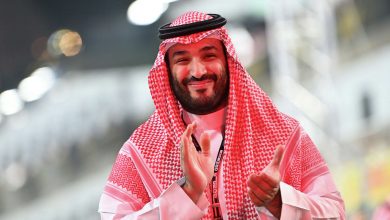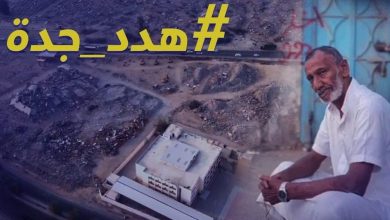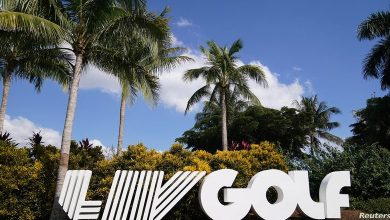New Forced Displacement in Saudi Arabia by Converting Nature Reserves into Private PropertyNew Forced Displacement in Saudi Arabia by Converting Nature Reserves into Private Property

An investigative report revealed that the Saudi government is carrying out a new forced displacement by converting nature reserves into private property under the pretext of protecting biodiversity.
According to the investigation published by the opposition newspaper Sawt Al-Nas, the Saudi regime, following the rise of Crown Prince Mohammed bin Salman to power and his ascension to the position of Crown Prince in June 2017, has been expanding the areas of nature reserves and transforming them into private property.
The investigation stated that this included issuing royal decrees that legitimized the seizure of public lands, claiming that their ownership belonged to the state and that Saudi citizens had no right to inhabit them. Consequently, their forced displacement became an acquired right for the authorities.
A nature reserve is a designated geographical area where special protection measures are implemented to prevent pollution or hunting, depending on its unique geological, botanical, or animal content. It often includes rare or endangered species and breeds.
On the other hand, royal nature reserves refer to geographical areas distributed throughout Saudi Arabia that are supposed to be publicly owned. However, King Salman bin Abdulaziz Al Saud transformed them into private properties through royal decrees issued in June 2018. He assigned their supervision to a council within the Royal Court called the Royal Reserves Council, which enjoys financial and administrative independence.
The Crown Prince, Mohammed bin Salman, heads the council, and each royal nature reserve has a board of directors and an authority responsible for its development. These reserves are effectively turned into exclusive enclaves, particularly considering the absence of popular political participation, independent media representing the people’s voice, or a watchdog to prevent abuses.
The Royal Reserves Council includes Prince Turki bin Mohammed bin Fahd, Prince Mohammed bin Abdulrahman bin Abdulaziz, Prince Abdulaziz bin Saud bin Nayef, Prince Abdullah bin Bandar bin Abdulaziz, Prince Badr bin Abdullah bin Mohammed bin Farhan, the Minister of Environment, Water, and Agriculture, and two specialized individuals selected by the council’s chairman.
As a result, the land of the kingdom and everything on it became privately owned and under the control of the Al Saud family. Meanwhile, the population was subjected to forced displacement and the threat of death for non-compliance with royal orders, especially since Prince Mohammed bin Salman had a significant share in the royal decrees that were called “Decisions of Dawn” at the time. He further consolidated his influence and authority with the seal of approval from his father.
The expansion of royal nature reserves is justified under the guise of preserving and developing biodiversity, protecting endangered species, and increasing vegetation cover. Prince Mohammed bin Salman boasted on November 12, 2020, that since 2016, he had worked to increase the percentage of nature reserves from 4% to over 14% of the kingdom’s total land area. He also established a special environmental security force with a staff of 1,100 individuals.
Following the announcement of the royal decisions, the authorities claimed that one of the benefits of royal nature reserves is the expansion of vegetation cover for the production of medicinal drugs derived from aromatic plants cultivated in these protected environments. However, the kingdom’s imports of medical drugs in the same year amounted to approximately 43 million kilograms, with a total value of around 16.71 billion Saudi riyals.
In 2022, the General Customs Authority reported that over 27,900 tons of medicines had been imported since the beginning of the year until August.
The royal decision claimed that establishing the Royal Reserves Council aimed to regulate the reserves to prevent harm to citizens’ properties, villages and displacement within their boundaries. It also aimed to reduce excessive hunting, grazing, and hoarding in order to increase vegetation cover, protect the natural environment for animals and plants, and preserve them. However, maps demonstrate that the expansion of reserves adversely affects citizens’ properties.
The decision specified the creation of six royal reserves and their respective boards of administration as follows: The “Rawdat Khuraim” reserve and its adjacent areas are designated as a royal reserve called “Imam Abdulaziz bin Mohammed Reserve” with an area of 11,300 square kilometres, chaired by Prince Turki bin Mohammed bin Abdulaziz Al Saud and with the membership of six experienced individuals nominated by the Royal Reserves Council.
The “Muhazzah Al-Sayd” reserve and its adjacent areas are designated as a royal reserve called “Imam Saud bin Abdulaziz Reserve” with an area of 2,240 square kilometres, chaired by Prince Abdullah bin Bandar bin Abdulaziz Al Saud and with the membership of six experienced individuals nominated by the Royal Reserves Council.
The “Tayseer” reserve and its adjacent areas are designated as a royal reserve called “Imam Turki bin Abdullah Reserve,” chaired by Prince Turki bin Mohammed bin Fahd bin Abdulaziz Al Saud and with the membership of six experienced individuals nominated by the Royal Reserves Council.
The “Tinahat” and “Khafs” reserves and the areas between them and adjacent to them are designated as a royal reserve called “King Abdulaziz Reserve” with an area of 15,700 square kilometres. It is chaired by Prince Abdulaziz bin Saud bin Nayef bin Abdulaziz Al Saud, with the membership of six experienced individuals nominated by the Royal Reserves Council.
The region between the “Neom Project,” “Red Sea Project,” and “Al-Ula” is designated as a royal reserve called “Prince Mohammed bin Salman Reserve” with an area of 16,000 square kilometres. It is chaired by Crown Prince Mohammed bin Salman bin Abdulaziz Al Saud, Deputy Prime Minister and with the membership of six experienced individuals nominated by the Royal Reserves Council.
The decision to establish the Royal Reserves Council has sparked widespread debate among the Saudi public and has been one of the most shocking decisions to public opinion.
Many have expressed their concerns and called for protecting Saudi lands from the anticipated displacement process, considering it as theft and looting of Saudi lands in a seemingly legitimate manner. As a result, Prince Mohammed bin Salman now controls 14% of the kingdom’s land area.
Saudi citizens are puzzled by the use of the names of princes and kings for the reserves, replacing their previously known and officially registered names in geographic, environmental, and research maps. This is seen as a consolidation of private ownership that contradicts the royal decree to open the reserves to citizens.
Observers have warned that this will lead to a widening gap between the oppressed and ruling families that monopolizes the country, resulting in increased class discrimination. This is especially concerning as the people already suffer from the phenomenon of “studbook,” where members of the ruling family seize vast lands in Saudi Arabia and claim them under the pretext of implementing projects that generate significant financial profits for themselves.
In turn, the opposition Saudi National Assembly Party has highlighted the expansion of royal nature reserves in a video published on July 6, 2021. In the video, they urged the Saudi people to protect their lands from an anticipated displacement operation, pointing out that the alarming expansion of Bin Salman’s reserves targets entire villages and regions.
They noted that this expansion was preceded by the withdrawal of the environmental protection authorities’ powers and their transfer to the Royal Court under the name of the Royal Reserves Council, established by King Salman. They observed the transformation of the reserves’ form from geographical spots in the heart of the desert into vast areas that include cities and villages inhabited by many people.
The party affirmed that the danger lies in creating a new reserve from scratch on the Red Sea coast, “Mohammed bin Salman Reserve.” In reality, plans are underway for three recent locations: one in the north called NEOM, the second in the south named the Red Sea Project, and the third in the Al-Ula province.
They warned that this plan comes at the expense of entire cities and can thus affect people in these areas, especially the northwestern regions that include Tabuk’s west, such as Haql, Duba, Al-Wajh, and Umluj. They anticipated the displacement of residents in multiple stages, and indeed, the authorities have already started removing citizens from Sharjah and Al-Khuraybah near the royal palaces in NEOM. Additionally, a mini airport is being constructed in Sharmah, near NEOM.
The truth is that there are regulations outlined in the royal decree issued to establish a council called the Royal Reserves Council within the Royal Court, which regulates the work of reserves according to the draft executive regulations for protected areas. These regulations state that reserves are established on unowned private land to which no one has exclusive rights, privileges, or claims.
The decree affirms that if there is ownership, exclusive rights, privileges, or claims over any area intended to be declared a reserve, the matter will be addressed in coordination with the relevant authorities or the rightful owner unless the owner waives their rights. In the case of strict protection areas, the map can be adjusted, or an alternative can be chosen, except in cases where private ownership exists. In such cases, the owner can benefit from it.
However, in the era of Mohammed bin Salman, who lacks any popular trust, and where the majority of his projects face obstacles and failures, with some being forgotten and others draining the state budget without yielding results, it is expected that the Saudi authorities will not abide by these regulations and will violate them. The evidence of this can be seen in what happened to the Al-Huwaitat family and the threats they faced in Jeddah.





